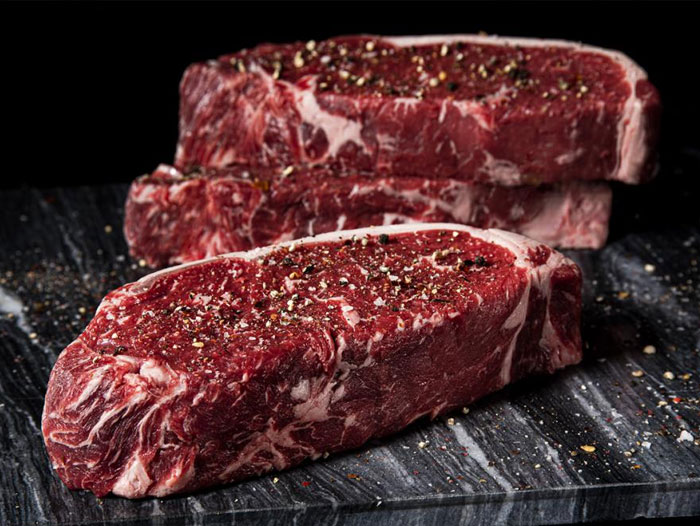Pandemic Impacts Certified Angus Beef fiscal year, but Sales Momentum is Strong
October 9, 2020 | 3 min to read

Blindfolded on a rollercoaster, this year in the beef business was filled with unexpected upside-downs and lurches.
Whether a restaurateur in New York City or a rancher in Nebraska, the impacts of COVID-19 make 2020 a ride no one will soon forget.
For the first time in 16 years, the Certified Angus Beef ® brand (CAB®) reported lower annual pounds sold for its fiscal year that ended September 30. Still, 2020 was one of strong performance and the fifth consecutive year with sales of more than a billion pounds across 51 countries. Those global sales of 1.175 billion pounds were down 6%, or 75 million pounds.
“We’re prepared and positioned today to support our partners’ business recovery and growth as we move forward,” says CAB President John Stika. “We’re fortunate to be in good shape because of the combined effort across our community.”
Supply set to meet demand
Despite market disruption and volatility, Angus cattlemen remained focused on producing high-quality beef. In 2020, a record 35.9% of all Angus-influenced cattle met the brand’s 10 quality specifications at licensed packers.
“Just a decade ago we were celebrating a 23% acceptance rate,” says Paul Dykstra, CAB assistant director of supply management and analysis. “It’s been a pretty steady uptick in both quality and Angus-influence in the cattle available for consideration.”
The 5.54 million cattle certified into the brand were only 1.9% fewer than 2019. That number was just 3.5 million in 2010.
“That demonstrates a clear, concerted effort. Cattlemen are more focused than ever on what demand is telling us about beef quality,” he says. “The brand is widely recognized as the target for successful producers who want to participate in the upper echelon of the market.”
Licensed packers returned more than $1.7 million dollars in premiums to cattle feeders each week for CAB-qualified carcasses, incentivizing that pull-through demand back to cow-calf suppliers.
“In a year when retail beef prices spiked and uncertainty was a theme, producers heard what consumers said again and again: quality still matters,” Dykstra says.
A consistent and growing supply enables licensed processors, distributors, restaurateurs and retailers to deliver. Stika says the brand is focused on meeting demand, though some segments may serve consumers differently moving forward.
Riding the rails
Last October the fiscal year began by working through lingering disruption from the packing plant fire in Kansas. That challenged the brand’s international business and the ability to secure retail feature activity moving into the holidays.
Foodservice, on the other hand, was on record pace.
With a combination of manageable prices and availability in January and February, sales across all segments strengthened, landing both months among the top 10 for all-time CAB sales.
March finished in the history books’ top 10, too.
While the month saw foodservice and international business decline by 40% due to the onset of COVID-19, consumers transitioned their buying patterns. Retail business spiked, all but offsetting the declines in other areas.
At the peak of the pandemic in April and May, foodservice and international sales were down 72% and 64% respectively. Retail business was up almost 44%.
June brought continuity, reestablishing itself in the supply chain, and moved into fall with two months of sales above 100 million pounds.
Putting all 12 months together, retail had a record year, increasing by 12.3%, while foodservice and international sales were down 22%.
Managing through widespread crisis is not unprecedented for the company. When BSE disrupted the beef industry in 2004, brand sales declined 80 million pounds, a fairly similar volume decrease for 2020.
“In 2004, total sales were roughly 43% of what they are today, so that 80-million-pound loss in business translated into a 13.5% decline in both tonnage and resources compared to the 6% we’ll manage through this year,” Stika says.
The brand remains stable with a steady supply and projections for continued growth, he says.
Closing the books on 2020, Stika is grateful and optimistic.
“For as much as we have enjoyed the past, our focus cannot be on saving the past,” he says. “Rather our focus will be on changing, evolving and being more flexible so that we can really excel for our partners in the future, regardless of what it looks like.”
That’s a promise designed to deliver dollars all the way back through the system.
